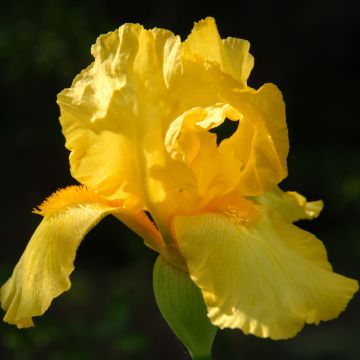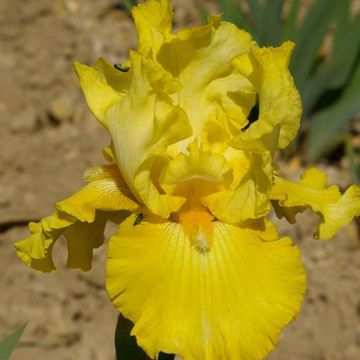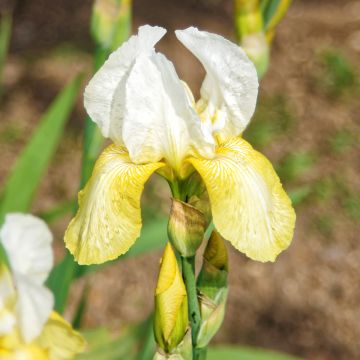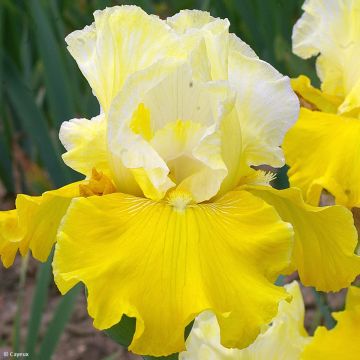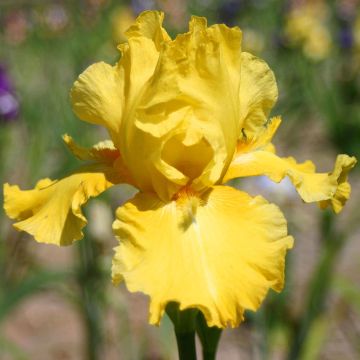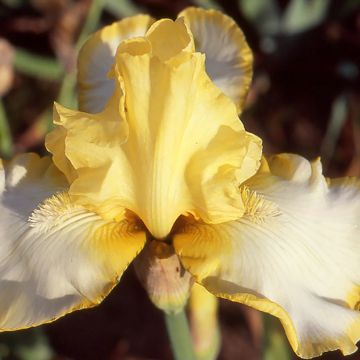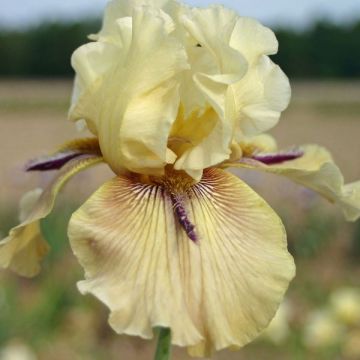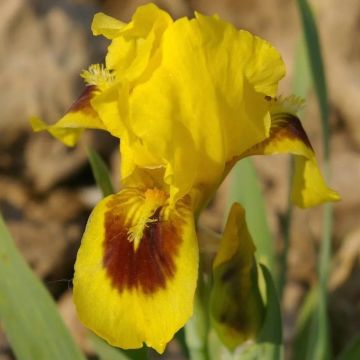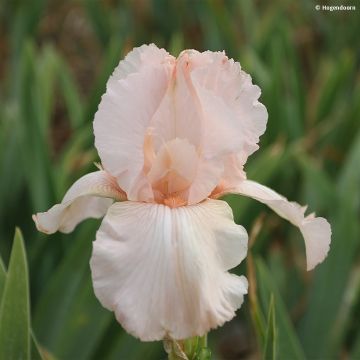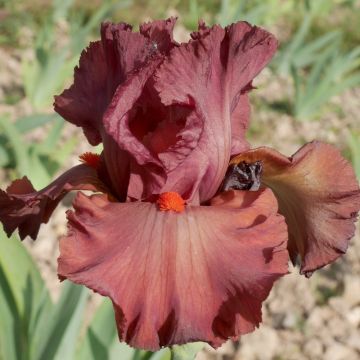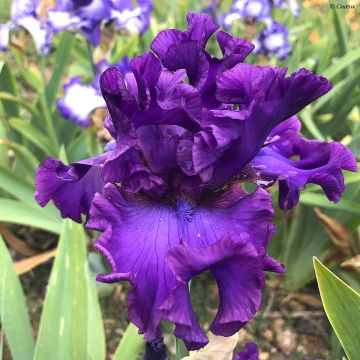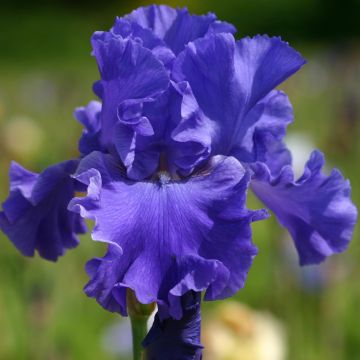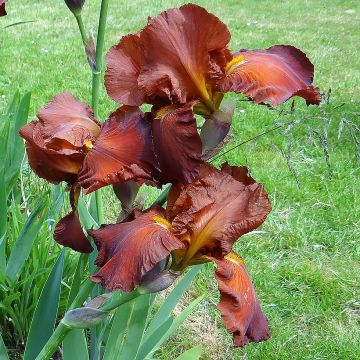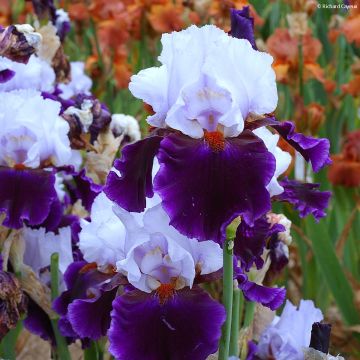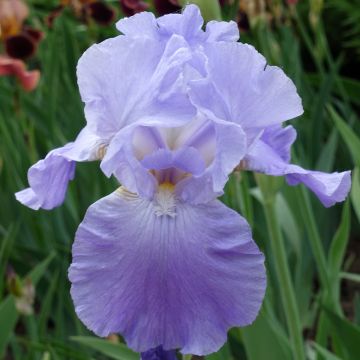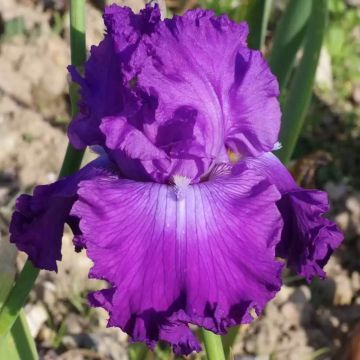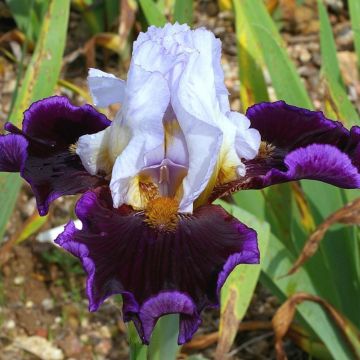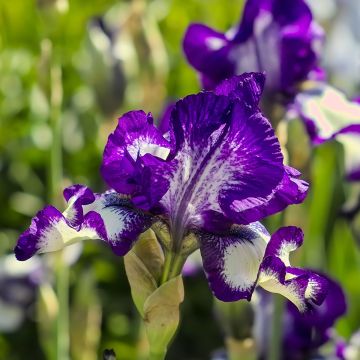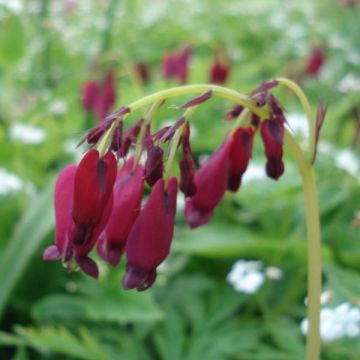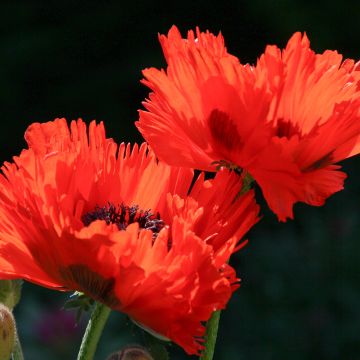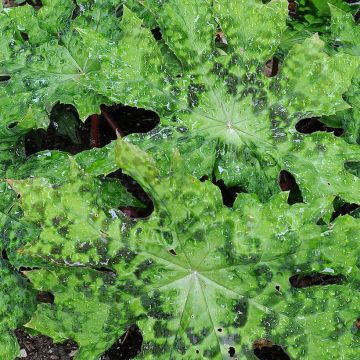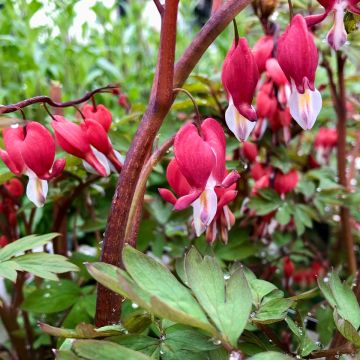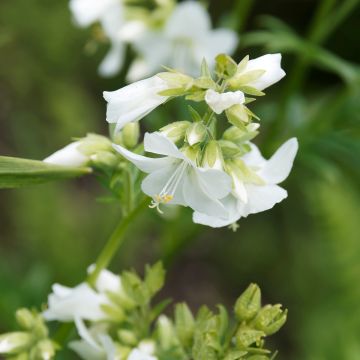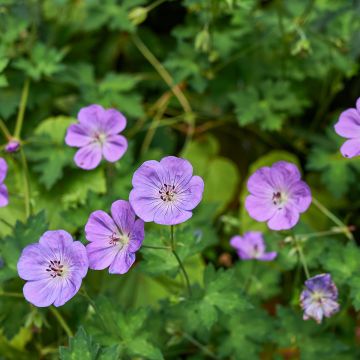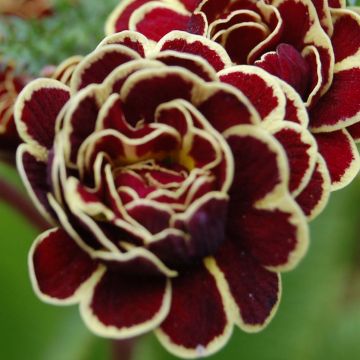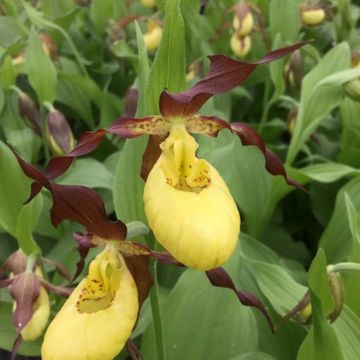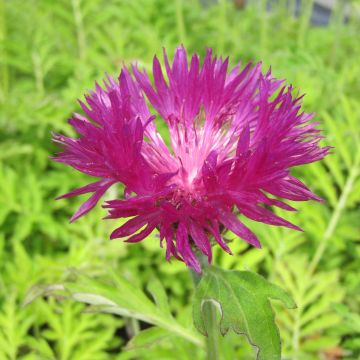Shipping country and language
Your country of residence may be:
Your country of residence is:
For a better user experience on our website, you can select:
Your shipping country:
-
Andorra
-
Austria
-
Belgium
-
Bulgaria
-
Canada
-
Chile
-
Croatia
-
Cyprus
-
Czechia
-
Denmark
-
Estonia
-
Finland
-
France
-
Germany
-
Greece
-
Hungary
-
Iceland
-
Ireland
-
Italy
-
Latvia
-
Lithuania
-
Luxembourg
-
Malta
-
Monaco
-
Netherlands
-
Poland
-
Portugal
-
Romania
-
Slovakia
-
Slovenia
-
Spain
-
Sweden
-
Switzerland
-
United Kingdom
We only deliver seed and bulb products to your country. If you add other products to your basket, they cannot be shipped.
Language:
-
French
-
German
-
Spanish
-
English
-
Italian
My Account
Hello
My wish lists
Log in / Register
Existing customer?
New customer?
Create an account to track your orders, access our customer service and, if you wish, make the most of our upcoming offers.
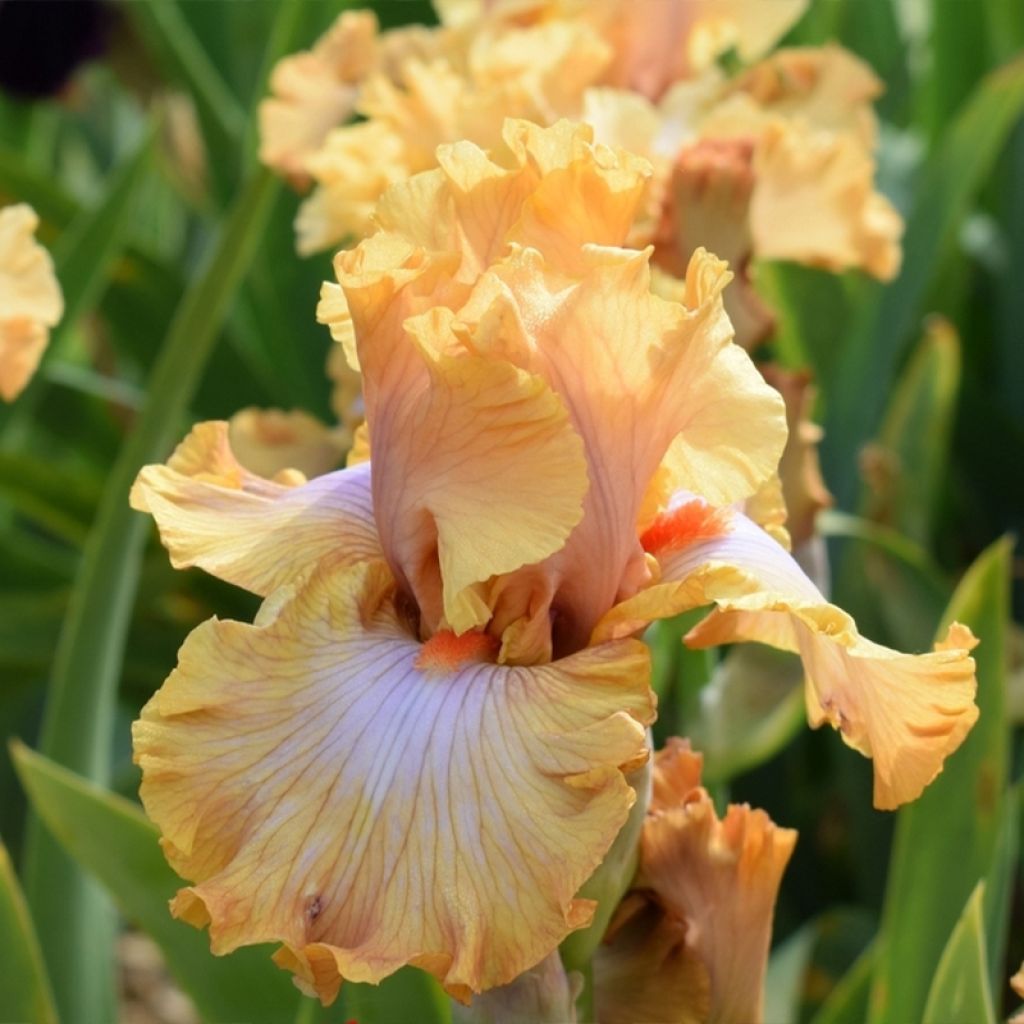

Iris germanica Ambertine - Grand Iris des Jardins
Iris germanica Ambertime - Bearded Iris
Iris germanica Ambertine
German Iris, Bearded Iris
Why not try an alternative variety in stock?
View all →Order in the next for dispatch today!
Dispatch by letter from €3.90.
Delivery charge from €5.90 Oversize package delivery charge from €6.90.
More information
This item is not available in your country.
Schedule delivery date,
and select date in basket
This plant carries a 12 months recovery warranty
More information
We guarantee the quality of our plants for a full growing cycle, and will replace at our expense any plant that fails to recover under normal climatic and planting conditions.
From €5.90 for pickup delivery and €6.90 for home delivery
Express home delivery from €8.90.
Does this plant fit my garden?
Set up your Plantfit profile →
Description
Iris germanica 'Ambertime' is a beautiful garden Iris, not widely cultivated, which remarkably combines apricot with frosted lavender mauve. A rather rare colour harmony, enhanced by mandarin beards of striking vivacity. Planted in clumps, this variety, which does not leave one indifferent, stands out in the garden. The shape of the floral parts, all undulated, as well as their thick and iridescent substance, make this variety a first-class achievement.
The 'Ambertime' Iris is a rhizomatous perennial plant that develops in clumps elegantly erect from spring, its foliage disappearing in winter. It belongs to the Iridaceae family. It is one of the many cultivars obtained over the centuries, whose controversial origin is discussed around the number of chromosomes of potential ancestors. It should be noted that Garden Irises have European origins. They are plants that thrive in calcareous soils and require plenty of sunshine for their rhizomes to "cook" in summer in order to bloom. A minimum of 6 hours of sunshine per day is generally required.
'Ambertime' will reach a height of 80-85cm (32-34in) when in bloom, with several buds per stem. It is a mid-season variety. The clump will spread indefinitely over time, with the central rhizomes becoming bare in favour of the outer rhizomes. The foliage consists of long and wide sword-shaped leaves, a slightly glaucous green, traversed by parallel veins. In April, floral stems appear that will produce a few large and heavily undulated flowers along the edges in May, blooming from the top to the lower branches. They consist of 3 upright petals, a soft yellow-orange colour, dominating 3 almost horizontal sepals, of the same soft apricot, with a wide pale mauve to white area around the orange beard. The colour of this plant is, as always with Garden Irises, enhanced by the thick and iridescent texture of the floral parts.
Blyth breeding, 2011. ('Pop Star' X 'Decadence')
To accompany irises, choose plants to associate with them based on their needs (exposure, soil...), their "respectful" growth habit towards irises (low-growing or light-foliaged plants, non-competitive plants), and their decorative complementarity (appearance, flowering time). For example, Gauras will provide little shade to the irises and will keep the deflowered iris bed attractive throughout the summer. California Poppies and Love-in-a-Mist will tolerate the same dry soil conditions as irises in summer. Perennial geraniums, salvias, and Libertias also complement irises very well. Slopes, the base of small trees with light foliage, and terrace edges can be stabilized by dense plantings of old varieties that can remain in place and require little care. If the goal is more decorative and access for maintenance is possible, one can choose more modern varieties, for example intermediates that are less likely than tall varieties to be literally flattened by wind and rain.
The vegetable garden can be adorned with a few clumps or borders of irises, as it is also the place dedicated to the cultivation of cut flowers.
Report an error about the product description
Iris germanica Ambertime - Bearded Iris in pictures
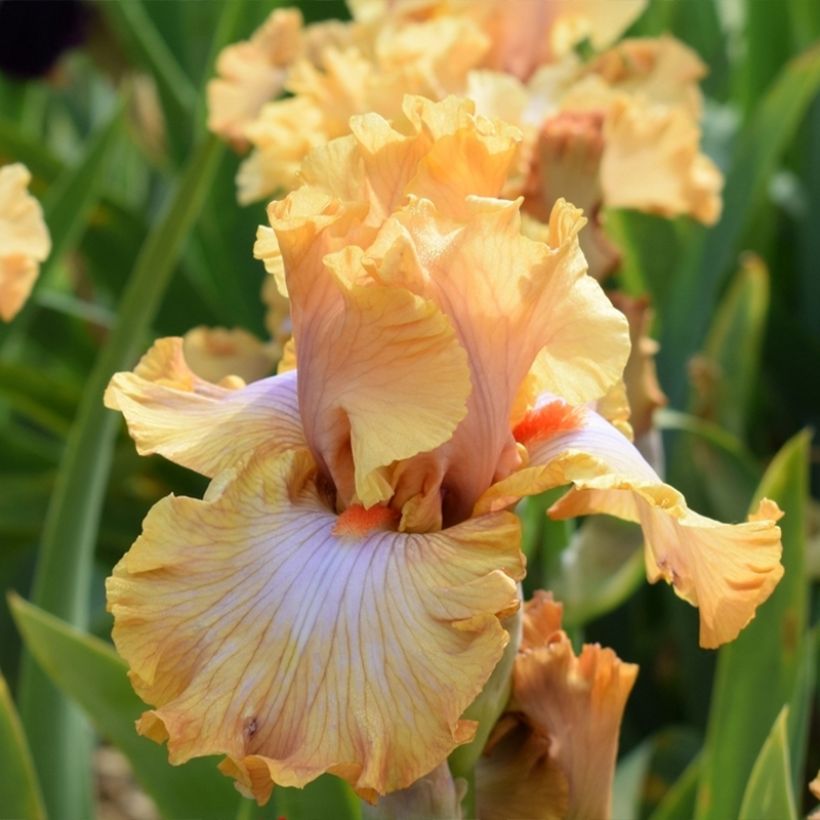

Flowering
Foliage
Plant habit
Botanical data
Iris
germanica
Ambertine
Iridaceae
German Iris, Bearded Iris
Cultivar or hybrid
Other German Iris - Bearded Iris
Planting and care
Do you have a sunny location, sheltered from the wind, warm and rather dry in the summer?
This is the ideal location for planting large 'Ambertime' irises! In the shade, they grow but do not flower. They can be grown in all regions. Hardy, they do not need winter protection. Well-drained soil is perfect, even if it is rather dry. German irises require a limestone soil: amend your soil with lime if it tends to be acidic. Excessively wet soil promotes rootstock rot. Plant from July to September. This allows the rootstocks to grow sufficiently before being dug up, and to establish new roots before winter. They should be planted as soon as they are purchased for best results. Plan to divide irises every 4 years or so to give them fresh soil. They have vigorous growth and require space to develop and flower well. They are planted with spacing appropriate to the size and vigour of the variety: approximately 34-50cm (13-20in) for large irises (5 to 10 plants per square metre). In a monochromatic planting, the rootstocks are planted in a staggered pattern. For a mix of colours, it is advisable for the overall aesthetic of the iris bed to plant them in groups of several plants of the same variety. Always consider the direction of growth of the rootstocks by arranging them in a star pattern, with buds and leaves turned outward, and spacing them well from other varieties to give them room to develop.
Planting
Dig a hole that is wide and deep enough. Create a wide conical mound of soil in the hole, on which the rootstock and spread out roots are placed. Cover the roots. It is important for the rootstock to be left just above the surface of the soil. It should not be planted in a depression (risk of rot), so anticipate that the soil will settle and the iris will sink. In clayey or wet soil, the rootstock can even be left elevated on a slight mound of a few centimetres. To make the soil adhere to the roots, lightly tamp the soil and water it abundantly immediately after planting. Water if necessary 2-3 times until it takes root.
Maintenance:
Keep the soil free of weeds by shallow hoeing, taking care not to damage the rootstocks or roots. Weeds shade the irises, retain moisture (causing rot), and attract slugs. Similarly, remove dry leaves. If they are diseased (reddish-brown bordered spots of heterosporiosis), burn them. Remove faded flowers.
Planting period
Intended location
Care
This item has not been reviewed yet - be the first to leave a review about it.
Spring flowering perennials
Haven't found what you were looking for?
Hardiness is the lowest winter temperature a plant can endure without suffering serious damage or even dying. However, hardiness is affected by location (a sheltered area, such as a patio), protection (winter cover) and soil type (hardiness is improved by well-drained soil).

Photo Sharing Terms & Conditions
In order to encourage gardeners to interact and share their experiences, Promesse de fleurs offers various media enabling content to be uploaded onto its Site - in particular via the ‘Photo sharing’ module.
The User agrees to refrain from:
- Posting any content that is illegal, prejudicial, insulting, racist, inciteful to hatred, revisionist, contrary to public decency, that infringes on privacy or on the privacy rights of third parties, in particular the publicity rights of persons and goods, intellectual property rights, or the right to privacy.
- Submitting content on behalf of a third party;
- Impersonate the identity of a third party and/or publish any personal information about a third party;
In general, the User undertakes to refrain from any unethical behaviour.
All Content (in particular text, comments, files, images, photos, videos, creative works, etc.), which may be subject to property or intellectual property rights, image or other private rights, shall remain the property of the User, subject to the limited rights granted by the terms of the licence granted by Promesse de fleurs as stated below. Users are at liberty to publish or not to publish such Content on the Site, notably via the ‘Photo Sharing’ facility, and accept that this Content shall be made public and freely accessible, notably on the Internet.
Users further acknowledge, undertake to have ,and guarantee that they hold all necessary rights and permissions to publish such material on the Site, in particular with regard to the legislation in force pertaining to any privacy, property, intellectual property, image, or contractual rights, or rights of any other nature. By publishing such Content on the Site, Users acknowledge accepting full liability as publishers of the Content within the meaning of the law, and grant Promesse de fleurs, free of charge, an inclusive, worldwide licence for the said Content for the entire duration of its publication, including all reproduction, representation, up/downloading, displaying, performing, transmission, and storage rights.
Users also grant permission for their name to be linked to the Content and accept that this link may not always be made available.
By engaging in posting material, Users consent to their Content becoming automatically accessible on the Internet, in particular on other sites and/or blogs and/or web pages of the Promesse de fleurs site, including in particular social pages and the Promesse de fleurs catalogue.
Users may secure the removal of entrusted content free of charge by issuing a simple request via our contact form.
The flowering period indicated on our website applies to countries and regions located in USDA zone 8 (France, the United Kingdom, Ireland, the Netherlands, etc.)
It will vary according to where you live:
- In zones 9 to 10 (Italy, Spain, Greece, etc.), flowering will occur about 2 to 4 weeks earlier.
- In zones 6 to 7 (Germany, Poland, Slovenia, and lower mountainous regions), flowering will be delayed by 2 to 3 weeks.
- In zone 5 (Central Europe, Scandinavia), blooming will be delayed by 3 to 5 weeks.
In temperate climates, pruning of spring-flowering shrubs (forsythia, spireas, etc.) should be done just after flowering.
Pruning of summer-flowering shrubs (Indian Lilac, Perovskia, etc.) can be done in winter or spring.
In cold regions as well as with frost-sensitive plants, avoid pruning too early when severe frosts may still occur.
The planting period indicated on our website applies to countries and regions located in USDA zone 8 (France, United Kingdom, Ireland, Netherlands).
It will vary according to where you live:
- In Mediterranean zones (Marseille, Madrid, Milan, etc.), autumn and winter are the best planting periods.
- In continental zones (Strasbourg, Munich, Vienna, etc.), delay planting by 2 to 3 weeks in spring and bring it forward by 2 to 4 weeks in autumn.
- In mountainous regions (the Alps, Pyrenees, Carpathians, etc.), it is best to plant in late spring (May-June) or late summer (August-September).
The harvesting period indicated on our website applies to countries and regions in USDA zone 8 (France, England, Ireland, the Netherlands).
In colder areas (Scandinavia, Poland, Austria...) fruit and vegetable harvests are likely to be delayed by 3-4 weeks.
In warmer areas (Italy, Spain, Greece, etc.), harvesting will probably take place earlier, depending on weather conditions.
The sowing periods indicated on our website apply to countries and regions within USDA Zone 8 (France, UK, Ireland, Netherlands).
In colder areas (Scandinavia, Poland, Austria...), delay any outdoor sowing by 3-4 weeks, or sow under glass.
In warmer climes (Italy, Spain, Greece, etc.), bring outdoor sowing forward by a few weeks.
